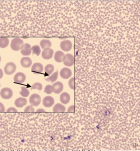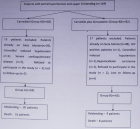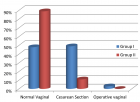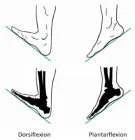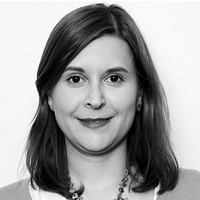Abstract
Review Article
Anxiety and depression as an effect of birth order or being an only child: Results of an internet survey in Poland and Germany
Jochen Hardt*, Lisa Weyer, Malgorzata Dragan and Wilfried Laubach
Published: 14 September, 2017 | Volume 1 - Issue 1 | Pages: 015-022
Background: Various studies examined the effect of birth order. First born children show usually better cognitive performance than their later born siblings. Studies on emotional aspects yield heterogeneous results, sometimes in favour of first born, sometimes in favour of later born children. Studies comparing only-children with children with siblings are rare.
Method: An internet survey was performed in 508 Polish and 500 German subjects. Only-children, first born, middle born and latest born children were compared regarding body mass index, depression, anxiety and partnership.
Results: No differences among first born, middle born and latest born children were detected. Only-children reported significantly less symptoms of social phobia than first born children (z=0.50, p< 0.01).
Conclusions: Except for suicidality, the results of this study question the sense of further investment in studying effects of birth order. In contrast, examining differences between only-children vs. children having siblings seems to have the potential to yield interesting and new results. Optimally, such research would combine self-report measures with reports from others, such as parents, teachers or clinicians.
Read Full Article HTML DOI: 10.29328/journal.hda.1001003 Cite this Article Read Full Article PDF
Keywords:
Body mass index; Depression; Anxiety; Partnership; Birth status
References
- Galton F. English men of science: Their nature and their nurture. 1874. Ref.: https://goo.gl/GsjJBv
- Adler A. Characteristics of the first, second and third child. Children. 1928; 3: 14-52.
- Sulloway FJ, Born to rebel. Birth order, family dynamics and creative lives. Ed Vintage. 1996. Ref.: https://goo.gl/h14Z3P
- Lawson DW, Mace R. Sibling configuration and childhood growth in contemporary British families. Int J Epidemiol. 2008; 37: 1408-1421. Ref.: https://goo.gl/MLeUVz
- Derraik JG, Ahlsson F, Lundgren M, Jonsson B, Cutfield WS. First-borns have greater BMI and are more likely to be overweight or obese: a study of sibling pairs among 26,812 Swedish women. J Epidemiol Community Health. 2016; 70: 78-81. Ref.: https://goo.gl/ndvisd
- Siervo M, Horta BL, Stephan BC, Victora CG, Wells JC. First-borns carry a higher metabolic risk in early adulthood: evidence from a prospective cohort study. PLoS One. 2011; 5. Ref.: https://goo.gl/UCLofY
- Kwok MK, Leung GM, Schooling CM. Associations of Birth Order with Early Adolescent Growth, Pubertal Onset, Blood Pressure and Size: Evidence from Hong Kong's "Children of 1997" Birth Cohort. PLoS One. 2016; 11. Ref.: https://goo.gl/MvuULV
- Mosli RH, Miller AL, Peterson KE, Kaciroti N, Rosenblum K, et al. Birth order and sibship composition as predictors of overweight or obesity among low-income 4- to 8-year-old children. Pediatr Obes. 2016; 11: 40-46. Ref.: https://goo.gl/grLppc
- Rohrer JM, Egloff B, Schmukle SC. Examining the effects of birth order on personality. Proc Natl Acad Sci U S A. 2015; 112: 14224-14229. Ref.: https://goo.gl/wTu4E5
- Cohen J. A power primer. Psychol Bull. 1992; 112: 155-159. Ref.: https://goo.gl/FDWjgL
- Abdel-Khalek AM, Lynn R. Intelligence, family size and birth order: Some data from Kuwait. Pers Individ Dif. 2008; 44: 1032-1038. Ref.: https://goo.gl/gY8sq2
- Zajonc RB. The family dynamics of intellectual development. Am Psychol. 2001; 56: 490-496. Ref.: https://goo.gl/YnrkFp
- Jensen AC, McHale SM. What makes siblings different? The development of sibling differences in academic achievement and interests. J Fam Psychol. 2015; 29: 469-478. Ref.: https://goo.gl/eXUEDb
- Freese J, Powell B, Steelman LC. Rebel without a cause or effect: Birth order and social attitudes. American Sociological Review. 1999; 64: 207-231. Ref.: https://goo.gl/4B9kWo
- Prime H, Plamondon A, Jenkins JM. Birth order and preschool children's cooperative abilities: A within-family analysis. Br J Dev Psychol. 2017; 35: 392-405. Ref.: https://goo.gl/pAaKsj
- Ghaderi F, Fijan S, Hamedani S. How Do Children Behave Regarding Their Birth Order in Dental Setting? J Dent (Shiraz). 2015; 16: 329-334. Ref.: https://goo.gl/uvHf9E
- Bjorngaard JH, Bjerkeset O, Vatten L, Janszky I, Gunnell D, et al. Maternal age at child birth, birth order, and suicide at a young age: a sibling comparison. Am J Epidemiol. 2013; 177: 638-644. Ref.: https://goo.gl/YN6LpG
- Rostila M, Saarela J, Kawachi I. Birth order and suicide in adulthood: evidence from Swedish population data. Am J Epidemiol. 2015; 179: 1450-1457. Ref.: https://goo.gl/kVgcEe
- Saarela J, Cederstrom A, Rostila M. Birth order and mortality in two ethno-linguistic groups: Register-based evidence from Finland. Soc Sci Med. 2016; 158: 8-13. Ref.: https://goo.gl/A2r3YW
- Koenig K. Brüder und Schwestern: Geburtenfolge als Schicksal. Vandenhook & Rupprecht. 2004.
- Rostila M, Saarela J. Invited commentary: birth order and suicide in a broader context. Am J Epidemiol. 2013; 177: 645-648. Ref.: https://goo.gl/8RTokT
- Alvi T, Assad F, Ramzan M, Khan FA. Depression, anxiety and their associated factors among medical students. J Coll Physicians Surg Pak. 2010; 20: 122-126. Ref.: https://goo.gl/hDk3tC
- Asal AR, Abdel-Fattah MM. Prevalence, symptomatology, and risk factors for depression among high school students in Saudi Arabia. Neurosciences (Riyadh). 2007; 12: 8-16. Ref.: https://goo.gl/ooH7fM
- Grosz HJ. The depression-prone and the depression-resistant sibling: a follow-up note on marital state. Br J Psychiatry. 1968; 114: 1559-1560. Ref.: https://goo.gl/AtAiXg
- Chartier MJ, Walker JR, Stein MB. Social phobia and potential childhood risk factors in a community sample. Psychol Med. 2001; 31: 307-315. Ref.: https://goo.gl/cp85Yp
- Mosli RH, Lumeng JC, Kaciroti N, Peterson KE, Rosenblum K, et al. Higher weight status of only and last-born children. Maternal feeding and child eating behaviors as underlying processes among 4-8 year olds. Appetite. 2015; 92: 167-172. Ref.: https://goo.gl/N3pB31
- Kirkcaldy B, Furnham A, Siefen G. Intelligence and birth order among children and Adolescents in Psychiatric care. School psychology international. 2009; 30: 43-55. Ref.: https://goo.gl/oKEzAq
- Travis R, Kohli V. The birth-order factor - ordinal position, social strata, and educational-achievement. J Soc Psychol. 1995; 135: 499-507. Ref.: https://goo.gl/5BCUgN
- Guo Y, Zhang J, Zhang N. Character strengths and their influencing factors among nursing students in Changsha, China: the only-child versus non-only-child. Arch Psychiatr Nurs. 2015; 29: 365-371. Ref.: https://goo.gl/pJa8zF
- Qin Q, Fu Y-X, Meng H-Q, Xiang H, Jiang J-Z, et al. Using the strengths and difficulties questionnaire to screen for child mental health in the twins and the only-child. Int J Clin Exp Med. 2016; 9: 8749-8754. Ref.: https://goo.gl/wwqeZz
- Bobbitt-Zeher D, Downey DB, Merry J. Number of Siblings During Childhood and the Likelihood of Divorce in Adulthood. J Fam Issues. 2016; 37: 2075-2094. Ref.: https://goo.gl/rnoaaw
- Carballo JJ, Garcia-Nieto R, Alvarez-Garcia R, Caro-Canizares I, Lopez-Castroman J, et al. Sibship size, birth order, family structure and childhood mental disorders. Soc Psychiatry Psychiatr Epidemiol. 2013; 48: 1327-1333. Ref.: https://goo.gl/rRHbze
- Cohen J, Statistical power analysis for behavioural sciences. 1988, Hillsdale, NY: Lawrence Erlbaum Associates.
- StataCorp, Stata Statistical Software: Release 12. 2011, StataCorp LP: College Station, Texas.
- Hardt J. The Symptom-Check-List-27-plus (SCL-27-plus): A modern conceptualization of a traditional screening instrument. German Medical Science - Psychosoc Med. 2008; 5. Ref.: https://goo.gl/Uu7hWR
- Weyer L. Einzelkinder, Erstgeborene, Mittelgeborene und Letztgeborene: Langzeiteffekte des Geburtsstatus.
- In Deutschland und Polen. unveroeff. Dissertation, FB Medizin, Mainz. 2016.
- Wermuth N, Cox DR. On the relation between interactions obtained with alternative codings of discrete variables. Methodika. 1992; 6: 76-86.
- Hardt J, Bernert S, Matschinger H, Angermeier MC, Vilagut G, et al. Suicidality and its relationship with depression, alcohol disorders and childhood experiences of violence: results from the ESEMeD study. J Affect Disord. 2015; 175: 168-174. Ref.: https://goo.gl/JNYaf7
- Semler G, Wittchen HU, Joschke K, Zaudig M, von Geiso T, et al. Test-retest reliability of a standardized psychiatric interview (DIS/CIDI). Eur Arch Psychiatry Neurol Sci. 1987; 236: 214-222. Ref.: https://goo.gl/F2YzUk
- Statistisches Bundesamt. Demographie: Privathaushalte - Kinder und Einzelkinder unter 18.
Figures:

Figure 1
Similar Articles
-
Burnout and Related Factors in Caregivers of outpatients with SchizophreniaHatice Demirbas*,Erguvan Tugba Ozel Kizil. Burnout and Related Factors in Caregivers of outpatients with Schizophrenia. . 2017 doi: 10.29328/journal.hda.1001001; 1: 001-011
-
Multi-factorial Depressive Disorders Need Multi-dimensional InterventionsMustafa Melih Bilgi*. Multi-factorial Depressive Disorders Need Multi-dimensional Interventions. . 2017 doi: 10.29328/journal.hda.1001002; 1: 012-014
-
Anxiety and depression as an effect of birth order or being an only child: Results of an internet survey in Poland and GermanyJochen Hardt*,Lisa Weyer,Malgorzata Dragan,Wilfried Laubach. Anxiety and depression as an effect of birth order or being an only child: Results of an internet survey in Poland and Germany. . 2017 doi: 10.29328/journal.hda.1001003; 1: 015-022
-
May we feed cancer?Maria Grazia Spurio*. May we feed cancer?. . 2018 doi: 10.29328/journal.ida.1001005; 2: 001-006
-
Vestibular-limbic relationships: Brain mappingPaolo Gamba*. Vestibular-limbic relationships: Brain mapping. . 2018 doi: 10.29328/journal.ida.1001006; 2: 007-013
-
Responding to Disasters: More than economic and infrastructure interventionsDavid Crompton OAM*,Ross Young,Jane Shakespeare-Finch,Beverley Raphael AM. Responding to Disasters: More than economic and infrastructure interventions. . 2018 doi: 10.29328/journal.ida.1001007; 2: 014-028
-
Mindset kinetics and some depression status: A new quantitative model under biochemical - toxicology approach?Luisetto M*,Ghulam Rasool Mashori,Behzad Nili-Ahmadabadi,Farhan Ahmad Khan,Kausar Rehman Khan. Mindset kinetics and some depression status: A new quantitative model under biochemical - toxicology approach?. . 2018 doi: 10.29328/journal.ida.1001008; 2: 029-039
-
Anti-anxiety effects in mice following acute administration of Ficus Thonningii (wild fig)Aduema W*,Akunneh-Wariso C,Ejiofo DC,Amah AK. Anti-anxiety effects in mice following acute administration of Ficus Thonningii (wild fig). . 2018 doi: 10.29328/journal.ida.1001009; 2: 040-047
-
Sleeplessness and healthSunitha V,Jeyastri Kurushev,Felicia Chitra,Manjubala Dash*. Sleeplessness and health. . 2019 doi: 10.29328/journal.ida.1001010; 3: 001-007
-
Translation, adaptation and validation of Depression, Anxiety and Stress Scale in UrduWaqar Husain*,Amir Gulzar. Translation, adaptation and validation of Depression, Anxiety and Stress Scale in Urdu. . 2020 doi: 10.29328/journal.ida.1001011; 4: 001-004
Recently Viewed
-
Hepato-Pulmonary syndrome and Porto-Pulmonary Hypertension: Rare combination cause of Hypoxemia in patient with end-stage renal failure on Hemodialysis and hepatitis C Induced Decompensated CirrhosisAwad Magbri*,Mariam El-Magbri,Eussera El-Magbri. Hepato-Pulmonary syndrome and Porto-Pulmonary Hypertension: Rare combination cause of Hypoxemia in patient with end-stage renal failure on Hemodialysis and hepatitis C Induced Decompensated Cirrhosis. Arch Vas Med. 2017: doi: 10.29328/journal.avm.1001002; 1: 008-012
-
Deep Learning-Powered Genetic Insights for Elite Swimming Performance: Integrating DNA Markers, Physiological Biometrics and Performance AnalyticsRahul Kathuria,Reeta Devi,Asadi Srinivasulu*. Deep Learning-Powered Genetic Insights for Elite Swimming Performance: Integrating DNA Markers, Physiological Biometrics and Performance Analytics. Int J Bone Marrow Res. 2025: doi: 10.29328/journal.ijbmr.1001020; 8: 006-015
-
Pure Erythroid Leukemia: The Sole Acute Erythroid LeukemiaFauzia Shafi Khan*,Khalid Mahmood,Alia Ahmad. Pure Erythroid Leukemia: The Sole Acute Erythroid Leukemia. Int J Bone Marrow Res. 2017: doi: 10.29328/journal.ijbmr.1001001; 1: 001-005
-
Causal Link between Human Blood Metabolites and Asthma: An Investigation Using Mendelian RandomizationYong-Qing Zhu, Xiao-Yan Meng, Jing-Hua Yang*. Causal Link between Human Blood Metabolites and Asthma: An Investigation Using Mendelian Randomization. Arch Asthma Allergy Immunol. 2023: doi: 10.29328/journal.aaai.1001032; 7: 012-022
-
The alterations effects in phosphorus of erythropoietin and U-74389GC Τsompos*,C Panoulis,A Triantafyllou,CG Zografos,K Tsarea,M Karamperi,A Papalois. The alterations effects in phosphorus of erythropoietin and U-74389G. Int J Bone Marrow Res. 2020: doi: 10.29328/journal.ijbmr.1001012; 3: 021-026
Most Viewed
-
Impact of Latex Sensitization on Asthma and Rhinitis Progression: A Study at Abidjan-Cocody University Hospital - Côte d’Ivoire (Progression of Asthma and Rhinitis related to Latex Sensitization)Dasse Sery Romuald*, KL Siransy, N Koffi, RO Yeboah, EK Nguessan, HA Adou, VP Goran-Kouacou, AU Assi, JY Seri, S Moussa, D Oura, CL Memel, H Koya, E Atoukoula. Impact of Latex Sensitization on Asthma and Rhinitis Progression: A Study at Abidjan-Cocody University Hospital - Côte d’Ivoire (Progression of Asthma and Rhinitis related to Latex Sensitization). Arch Asthma Allergy Immunol. 2024 doi: 10.29328/journal.aaai.1001035; 8: 007-012
-
Causal Link between Human Blood Metabolites and Asthma: An Investigation Using Mendelian RandomizationYong-Qing Zhu, Xiao-Yan Meng, Jing-Hua Yang*. Causal Link between Human Blood Metabolites and Asthma: An Investigation Using Mendelian Randomization. Arch Asthma Allergy Immunol. 2023 doi: 10.29328/journal.aaai.1001032; 7: 012-022
-
An algorithm to safely manage oral food challenge in an office-based setting for children with multiple food allergiesNathalie Cottel,Aïcha Dieme,Véronique Orcel,Yannick Chantran,Mélisande Bourgoin-Heck,Jocelyne Just. An algorithm to safely manage oral food challenge in an office-based setting for children with multiple food allergies. Arch Asthma Allergy Immunol. 2021 doi: 10.29328/journal.aaai.1001027; 5: 030-037
-
Snow white: an allergic girl?Oreste Vittore Brenna*. Snow white: an allergic girl?. Arch Asthma Allergy Immunol. 2022 doi: 10.29328/journal.aaai.1001029; 6: 001-002
-
Cytokine intoxication as a model of cell apoptosis and predict of schizophrenia - like affective disordersElena Viktorovna Drozdova*. Cytokine intoxication as a model of cell apoptosis and predict of schizophrenia - like affective disorders. Arch Asthma Allergy Immunol. 2021 doi: 10.29328/journal.aaai.1001028; 5: 038-040

If you are already a member of our network and need to keep track of any developments regarding a question you have already submitted, click "take me to my Query."






